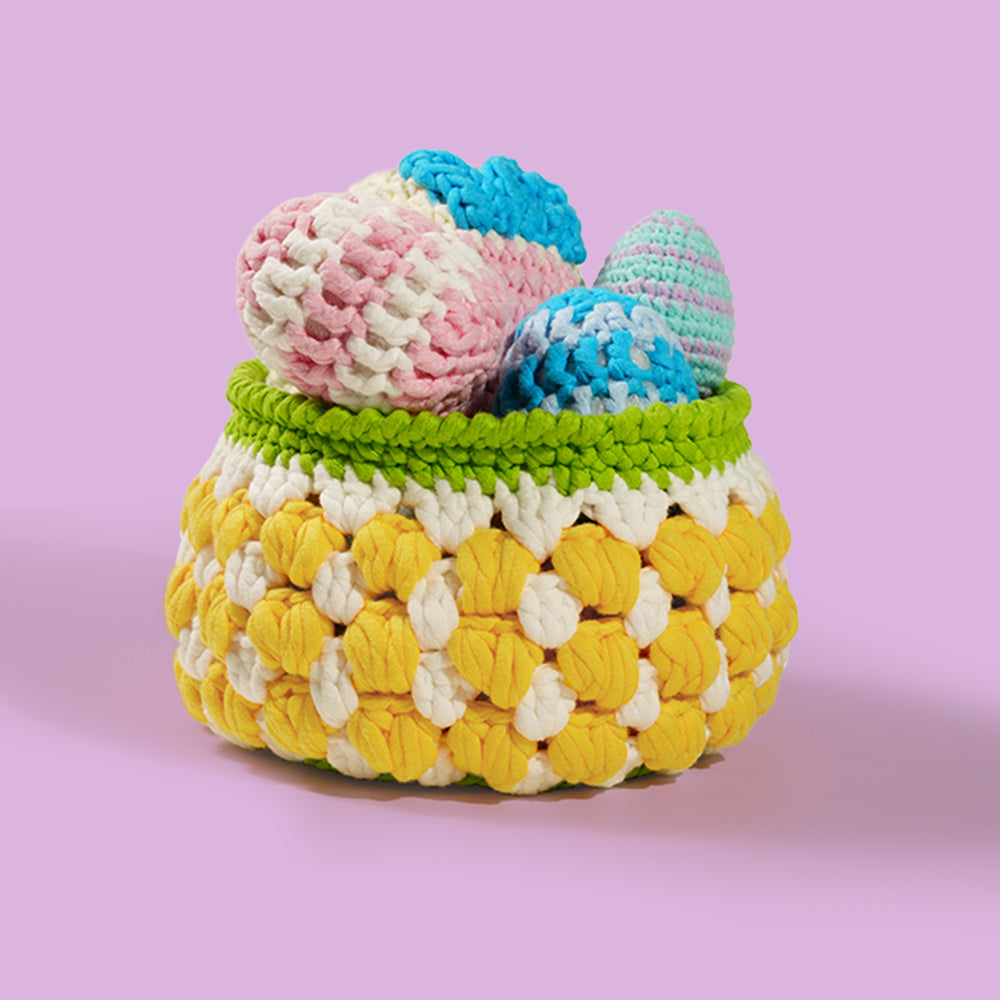What’s the Difference Between Single Crochet and Crossed Single Crochet?
Introduction
If you're new to crochet or looking to expand your stitch library, you’ve probably come across the basic single crochet (sc) and its textured cousin—the crossed single crochet (also called cross single crochet or x-sc). At first glance, they seem similar, but the texture, use, and appearance are quite different.
In this post, we’ll break down the key differences between the two, show you how to crochet each stitch step-by-step, and share tips, tricks, and ideal project ideas for both.
Single Crochet vs. Crossed Single Crochet: A Quick Comparison
|
Feature |
Single Crochet (sc) |
Crossed Single Crochet (x-sc) |
|
Difficulty |
Beginner |
Beginner to Intermediate |
|
Look |
Dense, smooth, tight |
Textured, criss-crossed |
|
Best For |
Basic fabrics, amigurumi, dishcloths |
Decorative edges, textured blankets, scarves |
|
Stitch Height |
Short |
Short (same height as sc) |
|
Yarn Usage |
Minimal |
Slightly more than sc |
How to Crochet a Basic Single Crochet (sc)
You’ll need:
-
Worsted weight yarn
-
5mm (H) crochet hook
-
Scissors & yarn needle
Step-by-step:
-
Start with a foundation chain
Chain any number of stitches (e.g., ch 10). -
Insert your hook into the second chain from the hook
Yarn over (yo), pull up a loop (2 loops on hook). -
Yarn over and pull through both loops
You’ve completed one single crochet stitch. -
Repeat across the row
Turn your work and chain 1 to start the next row.
Tip: Great for dense, durable fabric used in toys, washcloths, and bags.
How to Crochet a Crossed Single Crochet (x-sc)
Crossed single crochet adds a beautiful, criss-cross texture by working stitches in a different order.
Step-by-step:
-
Start with an even number of chains (e.g., ch 12).
-
Row 1: Work one row of regular single crochet.
-
Row 2 (Crossed Stitches):
-
Ch 1, skip the first stitch.
-
Sc into the next stitch.
-
Now go back and sc into the skipped stitch, inserting your hook in front of the last stitch.
-
-
Repeat:
Skip the next stitch, sc into the following, then sc into the skipped one.
Tip: Keep your tension loose to prevent puckering. The result is a lovely, textured fabric with subtle depth.
When to Use Each Stitch
Use Single Crochet When:
-
Making amigurumi (tight fabric holds stuffing well)
-
Creating simple or flat designs
-
Crafting dishcloths, coasters, bags
Use Crossed Single Crochet When:
-
You want added texture or visual appeal
-
Designing scarves, baby blankets, headbands
-
Adding borders or decorative sections to simple pieces
Crochet Tips for Best Results
-
Maintain even tension: Especially important with crossed stitches to avoid puckering.
-
Count often: It’s easy to lose count with skipped stitches. Recount your stitches every few rows.
-
Use stitch markers: Helpful at row ends or for tracking pattern repeats.
-
Try contrasting yarn: Helps visualize the X pattern when learning.
Frequently Asked Questions
Q: Is the crossed single crochet reversible?
A: Yes, it’s mostly reversible, though the back has a slightly different texture.
Q: Can I use crossed single crochet in the round?
A: Yes! It works beautifully, just watch your stitch alignment.
Q: Is crossed single crochet beginner-friendly?
A: Absolutely. If you’ve mastered basic single crochet, this is a great next step.
Q: Does it use more yarn?
A: A little more, since you’re crossing over and creating more fabric per stitch.
Final Thoughts
Whether you’re a crochet newbie or a seasoned maker, understanding the difference between single crochet and crossed single crochet gives you more creative freedom. Use single crochet for classic, clean designs, and switch to crossed single crochet when you want to add texture and dimension. Happy hooking!



